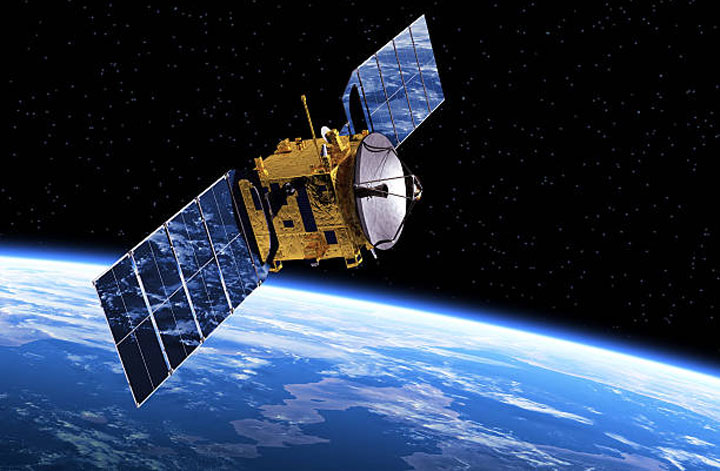
Creating more value from space won’t come from rebuilding old infrastructure, but new digital technologies.
Constellations spoke with Guillaume Tanier, Co-founder and CEO of Leanspace, about the evolution of satellite operations and space networks, and the transformation to more agile, lower cost digital ground systems to drive industry growth and innovation.
While much of the focus of the past 10 years has been on hardware, satellites, and rockets, Tanier said the new space movement and the commercialization of space is “about bringing value to earth and to society,” which will depend on new software and other IT advances on the ground.
"If you think about earth observation, science, or other missions, it's about processing data, images and communications,” and that depends on “tons of software” on the ground to make it all work, Tanier said.
“Many people don't realize how important software is here because that's how you run the business. That's how you provide value to the end customers,” he said, about the varied applications from imagery to tracking goods or ships.

New Needs on the Ground
Tanier explained the ground segment in terms of the control functions that command, plan and execute onboard operations, and the user functions that process the data, imagery and communications. The big challenge today is how to scale operations for more satellites that are changing frequently, and managing the network operations and data flows between consumers and devices.
“Everyone in the market is trying to find ways to be lower cost on how they build and operate their space missions and satellites, but also to drastically increase agility, to build faster, to evolve faster, to answer much faster to the needs of the market and their customers.”
One key issue he said is that development cycles are still way too long, with organizations typically rebuilding their infrastructure from scratch, “reinventing the wheel” to manage their satellite operations for each mission. Or, reusing existing “old school” technologies that were made before digitalization.
Now that the cycle to build and launch a satellite is down from five to ten years to two to three years, or even less, Tanier said it makes no sense to rebuild the same ground infrastructure from scratch over and over, and that in the era of new space, companies should not waste time and resources on something that is a commodity.
“That's what we see across the industry,”, and why things have to be faster and cheaper with the focus on innovation, he said.
Another challenge he pointed to is that data is still difficult to move and standardize with too many silos, tools, data formats, and different teams across geographies, requiring lots of manual processes to move the data.
Tanier said that those data management problems and interfaces have been “a killer in the space business.” Rather than spend a fortune to rebuild the basic satellite ground infrastructure, which doesn’t really add value, he said that companies should want to spend more time on innovation, and how to connect their data.
“The time for custom-built infrastructure, as I see it, is over. I don't see anyone really who can justify it in the coming years.”
A Game-changer That’s Not New
The way to reduce costs and accelerate the industry as a whole, Tanier said, is to empower people with the tools to build what they need.
He pointed to the “modern IT paradigms” being used in other industries, such as banking, energy, transportation, and life sciences, that are now available to the space segment. Companies are using digital platforms and the cloud to build and iterate quickly, and to digitalize and move data flows easier across teams.
Similarly, developers in the space sector can now use generic APIs, reference architectures, templates, and the cloud to build a solution in weeks that in the past took years.
“We need new ways to develop much faster, to be much more agile and to connect all the systems and tools in a way so teams can share and work on the same data together to iterate.”
With the space industry and each mission so specific, Tanier said it's about “enabling them to innovate more, to create the software that they need for their specific use case so they can deliver on their secret sauce.”
“The cloud brings so much value and so much benefit to accessing data, and to actually make it safer and more secure,” Tainer said. He added that the tools are now available for companies to configure the security, data, and customer access policies they struggled with in the past.
Digital Continuity
Digital transformation also allows the different lifecycle phases to be connected, Tanier said, pointing to industries, such as automotive, that are doing that now.
With that digital continuity, the asset models and the operational, telemetry, and test data can all be brought together and used across phases to better iterate.
By connecting them, the data is available to all the engineers to use, Tanier explained. “You can leverage insights and data from, for example, operations to better design the next generation of satellite. It's also how your ecosystem evolves almost automatically when you change something.
“If you look at the rocket companies who are trying to launch every week or reuse their space systems, it's hard to do if you don't have a quick way to learn from operations and to iterate very quickly and adapt.”
What’s Next in IT for Space?
Asked to look at other IT trends, Tanier acknowledged popular topics such as computing in space and onboard autonomy, but he still felt the biggest impact would be to solve the basic infrastructure problem.
He said a fortune is spent on developing AI powered models and automation layers that are orchestrating badly designed architectures that don't scale, or were great when they were designed, but are not a fit anymore.
The “quick easy fix,” he said, is to solve the “80% generic stuff,” and by making that better, “you will then see so much more innovation in the space industry.”
Tanier said that will make it easier for new players and new entrants to come in, whether startups or big enterprises, democratizing space.
“We talk a lot about democratization, but it's true. People are simplifying the space segments with standardized satellites and low-cost launchers…but having a way to put in place all the tools and the process you need to iterate is a big game changer that the industry needs if we want the space industry to become much more accessible.”
To hear more about the digital transformation of the ground segment and how new software and IT paradigms will benefit company innovation and industry growth, click here.
